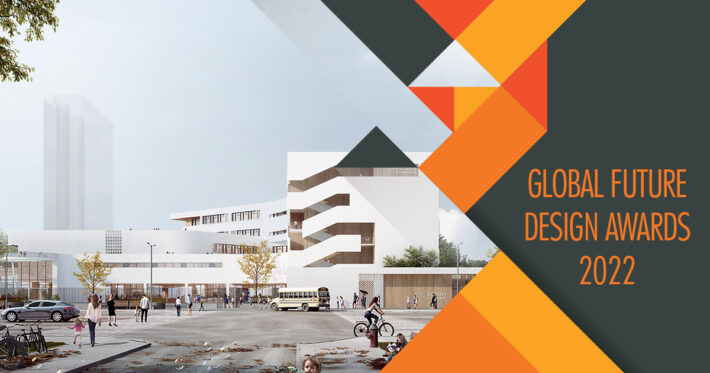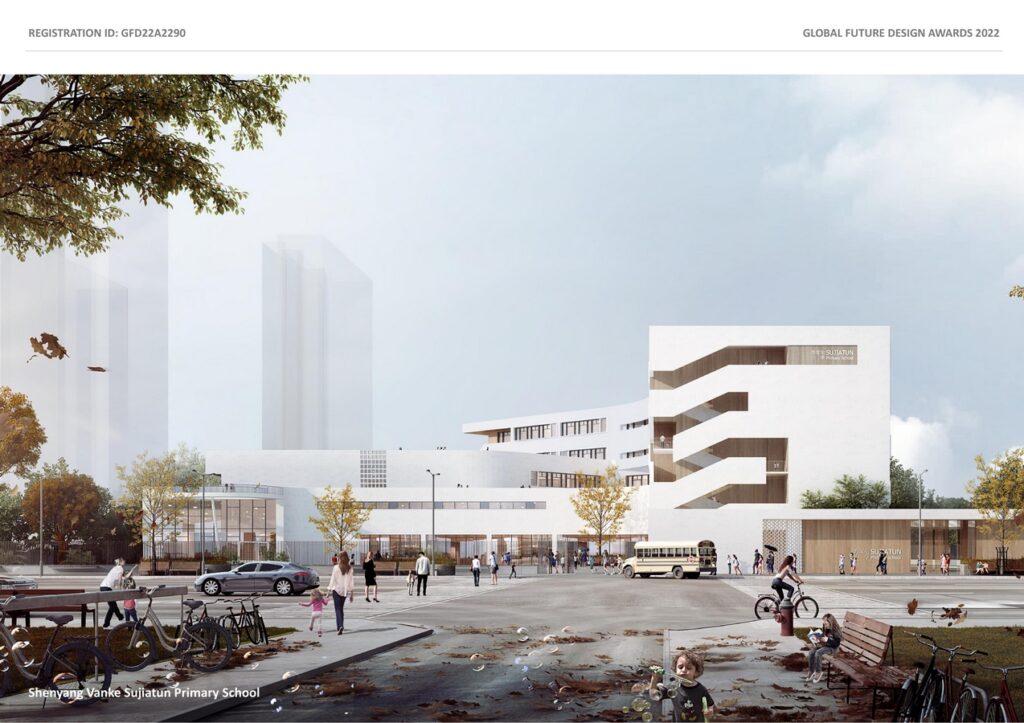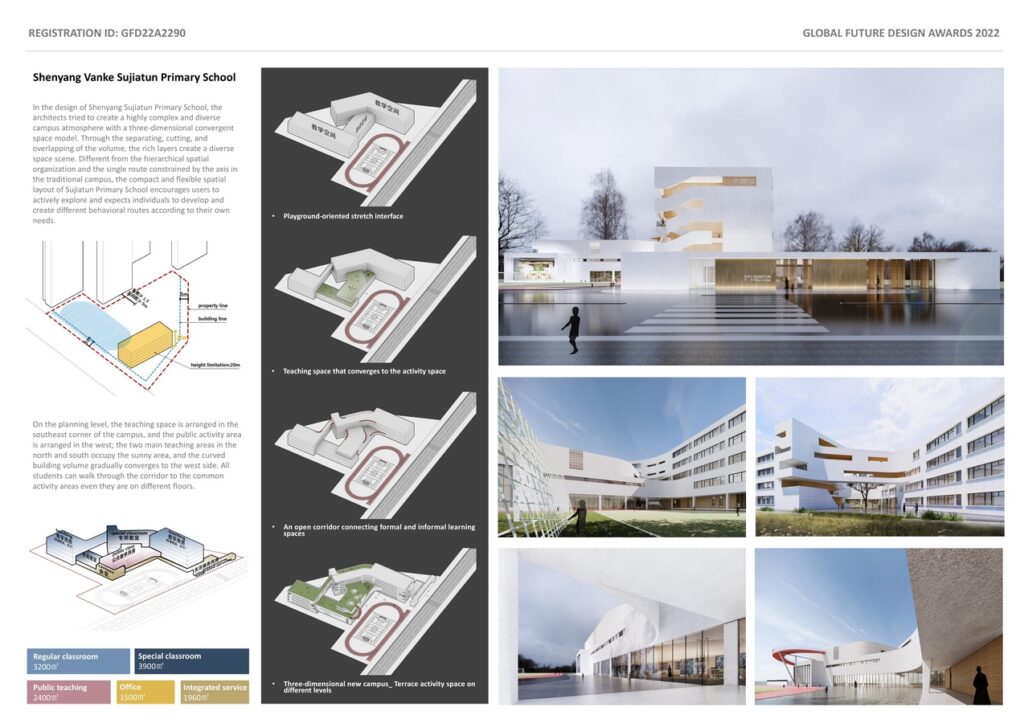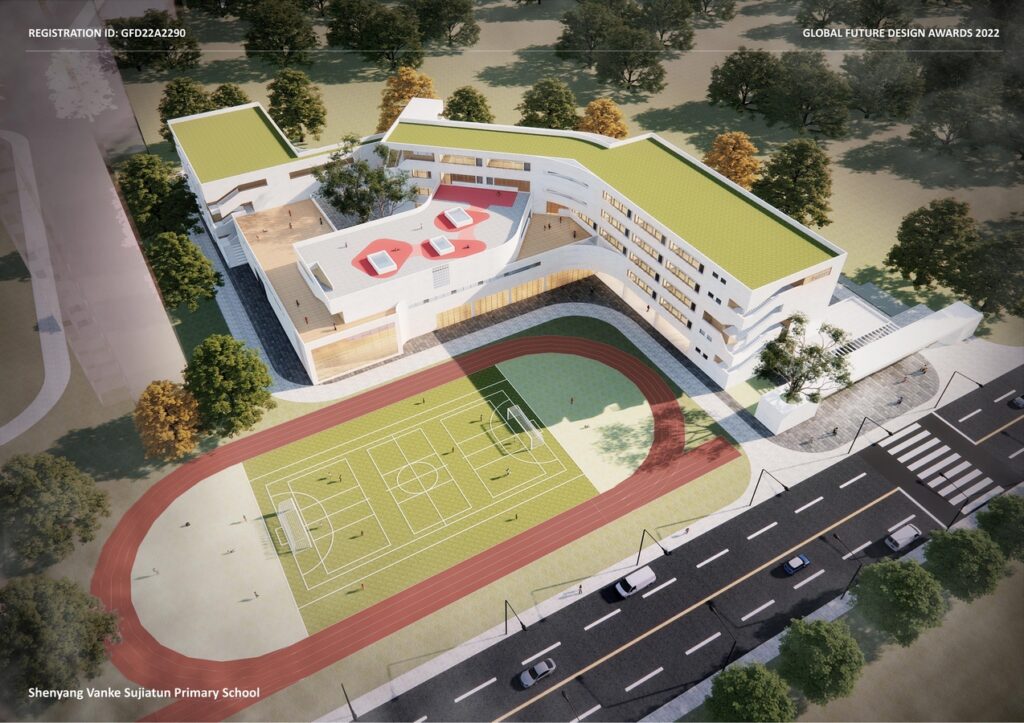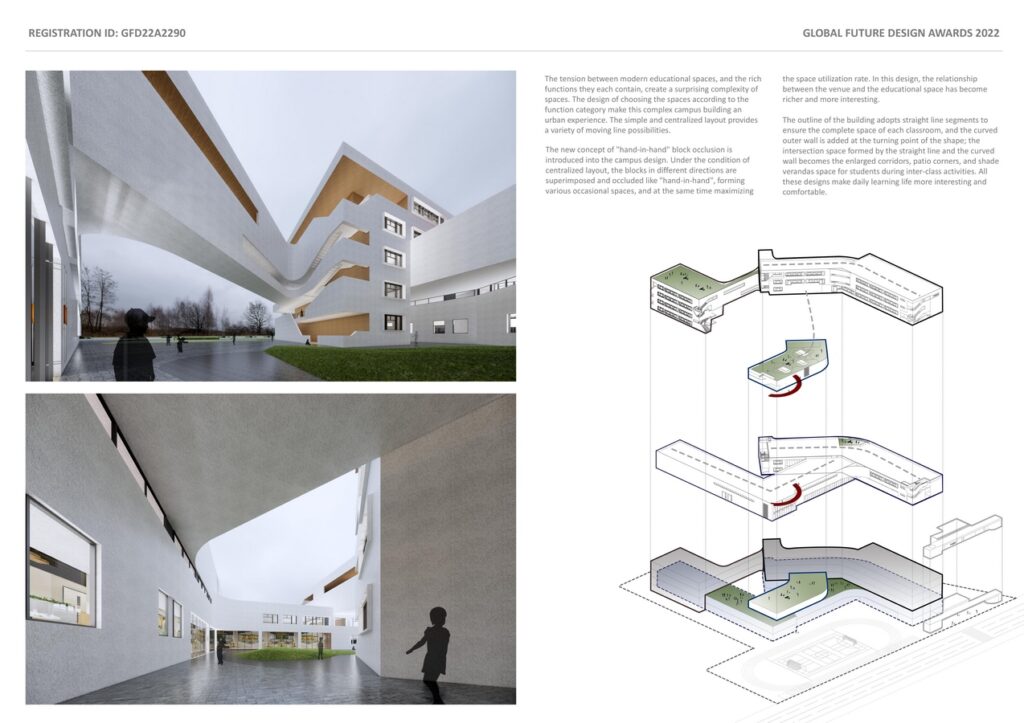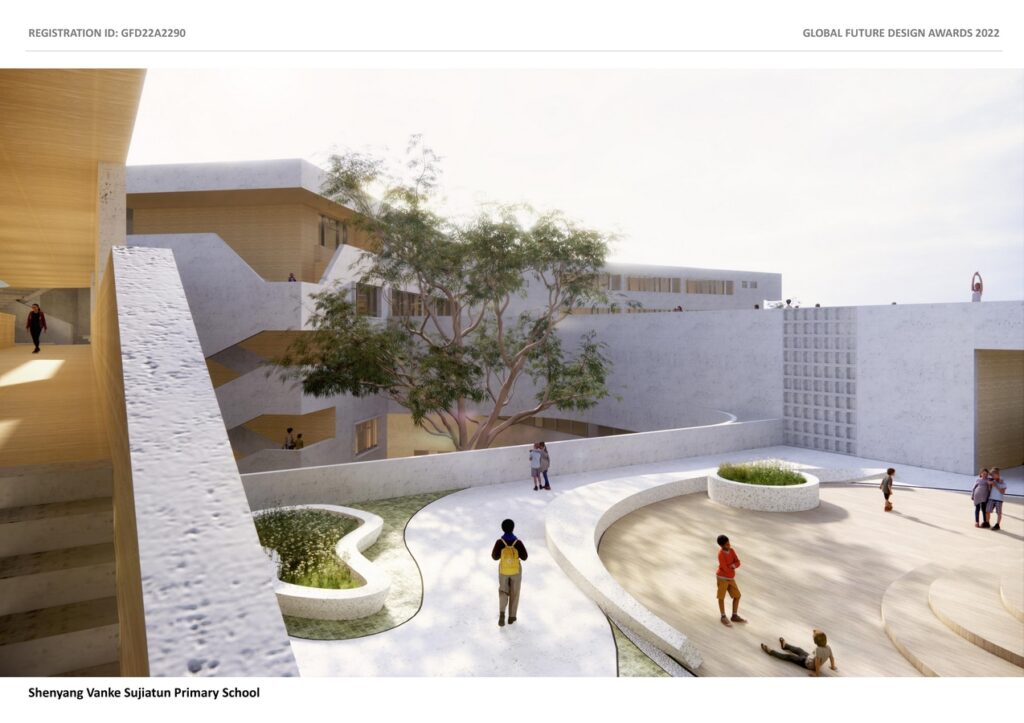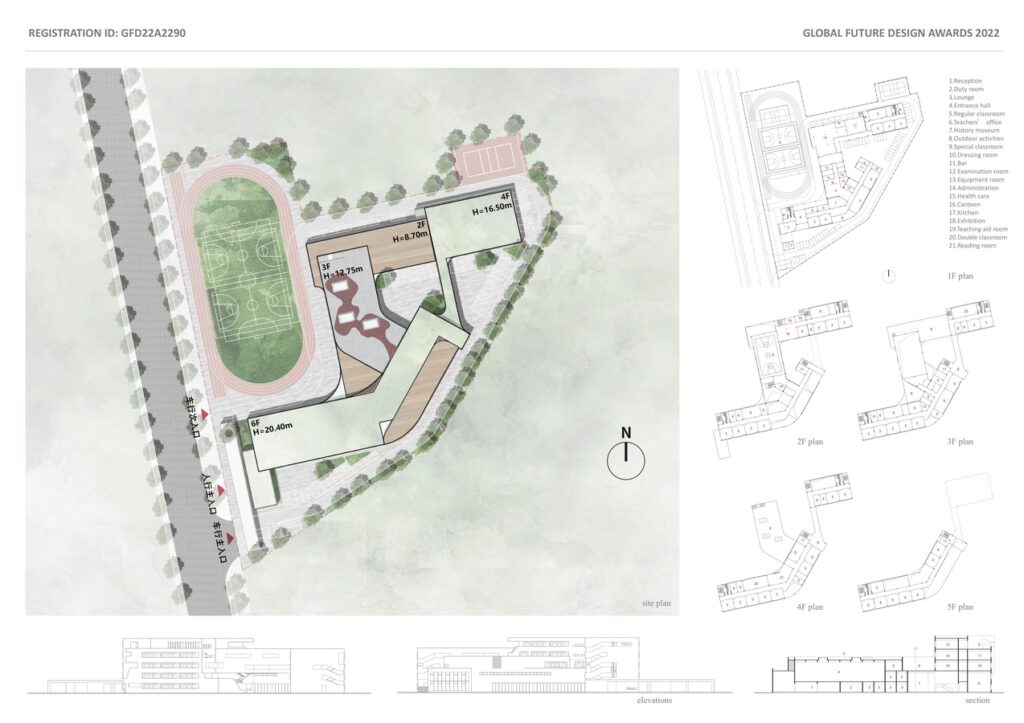In the design of Shenyang Sujiatun Primary School, the architects tried to create a highly complex and diverse campus atmosphere with a three-dimensional convergent space model. Through the separating, cutting, and overlapping of the volume, the rich layers create a diverse space scene. Different from the hierarchical spatial organization and the single route constrained by the axis in the traditional campus, the compact and flexible spatial layout of Sujiatun Primary School encourages users to actively explore and expects individuals to develop and create different behavioral routes according to their own needs.
Global Future Design Awards 2023: Entries Open!
Gold 🏆 Winner
Global Future Design Awards 2022
Shenyang Vanke Sujiatun Primary School
Educational Architecture (Under Construction)
Firm
RUF Architects
Architect/Designer
Qian Mingbo
Design Team
Qian Mingbo, Hu Sanduo, Zhou Ting, Li Gang
Location
Shenyang City, Liaoning Province, China
Country
China
Photographer/Copyright
©RUF Architects
On the planning level, the teaching space is arranged in the southeast corner of the campus, and the public activity area is arranged in the west; the two main teaching areas in the north and south occupy the sunny area, and the curved building volume gradually converges to the west side. All students can walk through the corridor to the common activity areas even they are on different floors.
The tension between modern educational spaces, and the rich functions they each contain, create a surprising complexity of spaces. The design of choosing the spaces according to the function category make this complex campus building an urban experience. The simple and centralized layout provides a variety of moving line possibilities.
The new concept of “hand-in-hand” block occlusion is introduced into the campus design. Under the condition of centralized layout, the blocks in different directions are superimposed and occluded like “hand-in-hand”, forming various occasional spaces, and at the same time maximizing the space utilization rate. In this design, the relationship between the venue and the educational space has become richer and more interesting.
- Provide sheltered buffer space for parents to pick up and drop off
Campus buildings need to provide safety and comfort for students while also providing shelter for parents and pedestrians. The architects designed a continuous entrance buffer space at the interface along the west side of the city road; open seats and overhanging eaves create a street garden that shelters from wind and rain. At the same time, as a starting point, behaviors are selected and differentiated from here, resulting in a variety of possibilities in the organization of different pathways.
- Playground-oriented stretch interface
The public teaching rooms are arranged along one side of the playground, forming an open interface facing the outdoor activity area. The veranda space on the ground floor of the teaching building is used as a dynamic transition space between indoor and outdoor. Openness and publicity spread naturally in the semi-enclosed and semi-shaded, or smoothly unfold, or turn deeply.
- Three-dimensional new campus_ Terrace activity space on different levels
The roof breaks the traditional negative and separate parts and becomes the most iconic element of the campus. While accommodating more teaching activities, it has shaped the unique image of the campus and achieved a multi-level and three-dimensional new campus.
- An open corridor connecting formal and informal learning spaces
The roof activity venues of different heights are connected in series by open stairs, and finally converge to the outdoor track and field venue. The corridor of the courtyard and the staircase that forms the unique façade broke through the traditional idea of the scattered layout of the building. The architects used a new way to maximize the efficiency of this continuous generation of buildings, allowing public activities to follow the volume change and naturally penetrate to every corner and interface of the campus.


